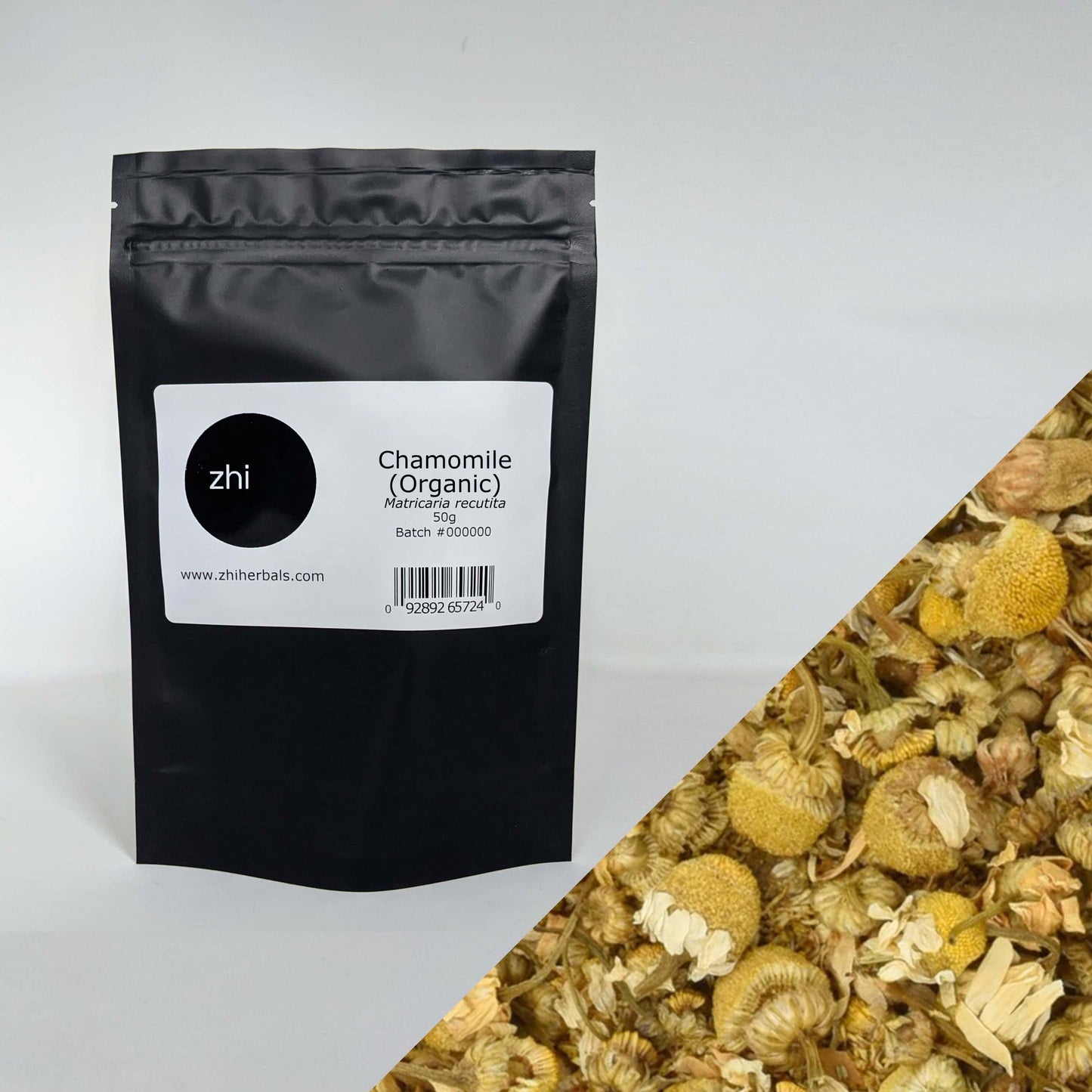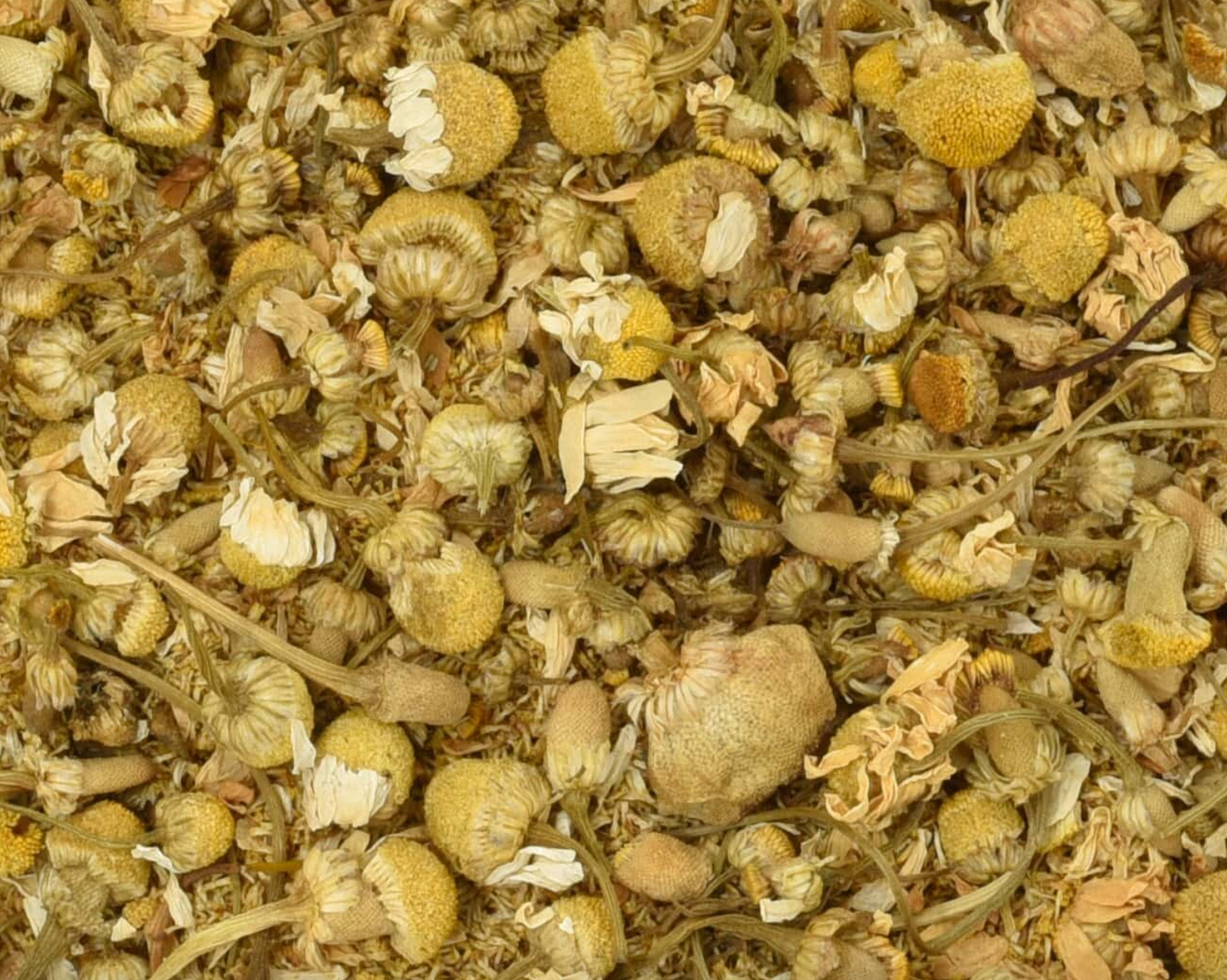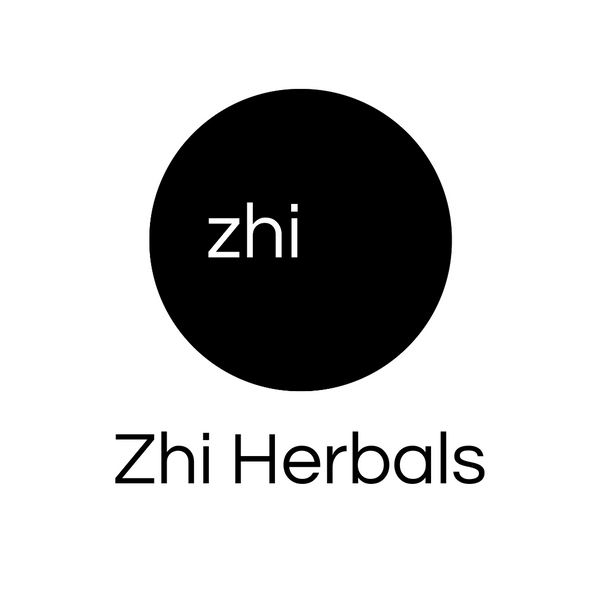Zhi Herbals
Chamomile (Organic)
Chamomile (Organic)
Couldn't load pickup availability
Common Name
Chamomile, Chamomille, German Chamomille, Wild Chamomile, Camomile
Latin Name
Matricaria recutita
Origin
Egypt
What Is Chamomile?
Chamomile is a gentle soothing herb that is safe for both adults and children. Chamomile works well both on its own and when combined with other herbs.
How to Use Chamomile (Common Uses)
Taken internally as a tea, powder, in capsules, and as an extract. Chamomile is often consumed as a calming beverage. It can also be used externally as an infused oil or poultice. The variety of chamomile that we carry, Matricaria recutita, is considered the best tasting variety out of all the different types of chamomile available.
Visit our herbal blog for fun facts and ideas about how to use chamomile.
Medicinal Uses and Benefits of Chamomile
Taken internally, chamomile can be used to reduce many types of gastrointestinal inflammation. It can be beneficial in conditions ranging from GERD, IBS, and gastritis to an upset stomach. Chamomile tea can also be useful to help to relieve gas and bloating. Due to its many digestive benefits, you can find chamomile flowers as a key ingredient in our Stomach Healing Tea and Anti-Gas Tea.
Chamomile tea can also be useful as an herb to help balance blood sugar.
Chamomile is a mild relaxing and antispasmodic herb, making it beneficial when used as a gentle sleep aid, especially for children. We use chamomile for this purpose in our Gentle Relaxing Tea blend.
Chamomile may beneficial for treating muscle spasms, especially when taken internally.
Historically, chamomile has been given to babies to help with teething related discomfort and colic.
Topically, chamomile can be useful for reducing inflammation and healing wounds and sunburns.
Chamomile has antibacterial effects, and is a popular ingredient in soaps and body care products. Its powerful anti-inflammatory effects make it an especially good choice for conditions such as acne, skin irritation (rosacea, eczema, rashes, etc), hemorrhoids, gingivitis, ulcers, and infections.
Active Constituents in Chamomile
Bisabolol, chamazulene, axulene, matricin, apigenin, umbelliferone, sesquiterpene lactones, flavonoids, quercetin.
Share


Totally satisfied
Fast shipping. Delicious tea
great quality and quick delivery! I was very impressed :)
Fast shipping, great product and packaged nicely!
Everything came within a reasonable time, solid and simple packaging, good quality herbs. Will be ordering again.


